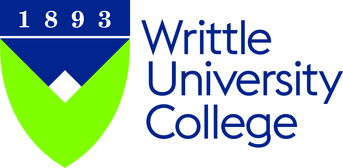Bone marrow mesenchymal stem cells do not enhance intra-synovial tendon healing despite engraftment and homing to niches within the synovium
Khan, Mohammad R., Dudhia, Jayesh, David, Frederic H., Ferro de Godoy, Roberta, Mehra, Vedika., Hughes, Gillian, Dakin, Stephanie G., Carr, Andrew J., Goodship, Allen E. and Smith, Roger K. W. (2018) Bone marrow mesenchymal stem cells do not enhance intra-synovial tendon healing despite engraftment and homing to niches within the synovium. Stem Cell Research & Therapy, 9 (1). ISSN 1757-6512
|
Text
Bone_marrow_mesenchymal_stem_cells_do_not_enhance_(1).pdf - Published Version Available under License Creative Commons Attribution. Download (3MB) | Preview |
Abstract
Background Intra-synovial tendon injuries display poor healing, which often results in reduced functionality and pain. A lack of effective therapeutic options has led to experimental approaches to augment natural tendon repair with autologous mesenchymal stem cells (MSCs) although the effects of the intra-synovial environment on the distribution, engraftment and functionality of implanted MSCs is not known. This study utilised a novel sheep model which, although in an anatomically different location, more accurately mimics the mechanical and synovial environment of the human rotator cuff, to determine the effects of intra-synovial implantation of MSCs. Methods A lesion was made in the lateral border of the lateral branch of the ovine deep digital flexor tendon within the digital sheath and 2 weeks later 5 million autologous bone marrow MSCs were injected under ultrasound guidance into the digital sheath. Tendons were recovered post mortem at 1 day, and 1–2, 4, 12 and 24 weeks after MSC injection. For the 1-day and 1–2-week groups, MSCs labelled with fluorescent-conjugated magnetic iron-oxide nanoparticles (MIONs) were tracked with MRI, histology and flow cytometry. The 4, 12 and 24-week groups were implanted with non-labelled cells and compared with saline-injected controls for healing. Results The MSCs displayed no reduced viability in vitro to an uptake of 20.0 ± 4.6 pg MIONs per cell, which was detectable by MRI at minimal density of ~ 3 × 104 cells. Treated limbs indicated cellular distribution throughout the tendon synovial sheath but restricted to the synovial tissues, with no MSCs detected in the tendon or surgical lesion. The lesion was associated with negligible morbidity with minimal inflammation post surgery. Evaluation of both treated and control lesions showed no evidence of healing of the lesion at 4, 12 and 24 weeks on gross and histological examination. Conclusions Unlike other laboratory animal models of tendon injury, this novel model mimics the failed tendon healing seen clinically intra-synovially. Importantly, however, implanted stem cells exhibited homing to synovium niches where they survived for at least 14 days. This phenomenon could be utilised in the development of novel physical or biological approaches to enhance localisation of cells in augmenting intra-synovial tendon repair.
| Item Type: | Article |
|---|---|
| Divisions: | Equine & Veterinary Physiotherapy |
| Depositing User: | Dr Roberta Blake |
| Date Deposited: | 21 Jan 2020 16:46 |
| Last Modified: | 10 Dec 2023 14:34 |
| URI: | https://writtle.repository.guildhe.ac.uk/id/eprint/15172 |
Actions (login required)
 |
Edit Item |

